15 Signs It’s Time to Replace Your Roof Underlayment

When roof issues arise, most people look at shingles or flashing—but the real problem might lie beneath. Knowing when to replace roof underlayment can be the difference between a quick fix and a costly structural repair.
This guide breaks down the most common (and easily missed) signs that your underlayment may be failing—whether you manage a commercial building or own a residential home.
We’ll walk you through:
- Why Roof Underlayment Failure Is a Serious Issue
- 15 Warning Signs Your Roof Underlayment Needs Replacing
- Unique Indicators for Flat Roofs and Commercial Buildings
- When to Schedule an Inspection
- Risks of Delaying Underlayment Replacement
Understanding what to look for—and when to act—can save you from major water damage, mold, and expensive repairs.
Let’s start by looking at why underlayment failure matters more than most people realize.
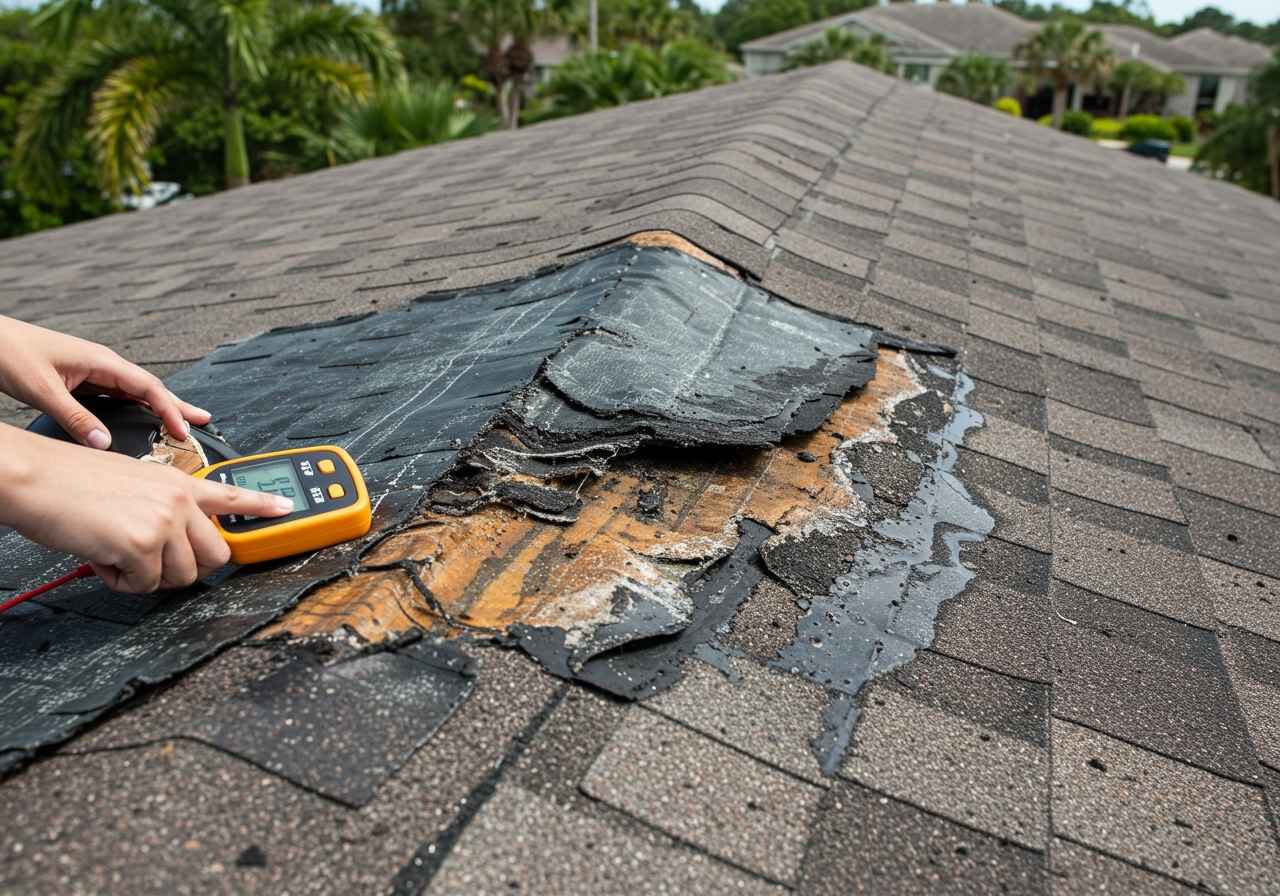
Why Roof Underlayment Failure Is a Serious Issue
Roof underlayment isn’t something most people think about—until there’s a problem. Tucked between your roofing shingles and the roof deck, underlayment acts as a crucial moisture barrier, highlighting the underlayment role in roof system performance. It’s your roof’s second line of defense against everything from wind-driven rain to humidity buildup and storm damage. When this hidden layer starts to fail, the consequences can quickly escalate from minor inconveniences to serious (and expensive) structural issues.
Unlike shingles, underlayment wear isn’t easy to spot from the ground. That’s what makes it so dangerous—problems often go unnoticed until visible damage appears inside your home or building. By then, moisture may have already seeped into the wood decking, insulation, or attic space, triggering a domino effect of issues that include:
- Water stains and leaks that reappear even after roof repairs
- Mold growth in walls, ceilings, or attic insulation
- Wood rot and soft decking that can compromise structural safety
- Warping or bubbling of interior paint and finishes
- Escalating energy bills caused by insulation damage and poor roof ventilation
In commercial settings, underlayment failure can disrupt operations, damage equipment, or lead to costly tenant complaints. For properties with flat roofing systems, pooling water and frequent foot traffic can accelerate wear on underlayment layers, increasing the risk of failure under pressure points or at seams.
If you’re unsure what type of material is installed on your roof, this guide to roof underlayment types offers a breakdown of options—from felt to synthetic products—and how each one performs in various climates.
What makes underlayment failure particularly urgent is that it tends to worsen quietly and rapidly—especially in high-moisture environments like Florida or after a heavy storm season. And unlike shingles, you can’t patch underlayment; full replacement is typically required once deterioration sets in.
The bottom line: If your roof’s underlayment is compromised, your entire roofing system is vulnerable. Spotting the signs early can help prevent widespread damage, protect your property investment, and keep repair costs manageable.
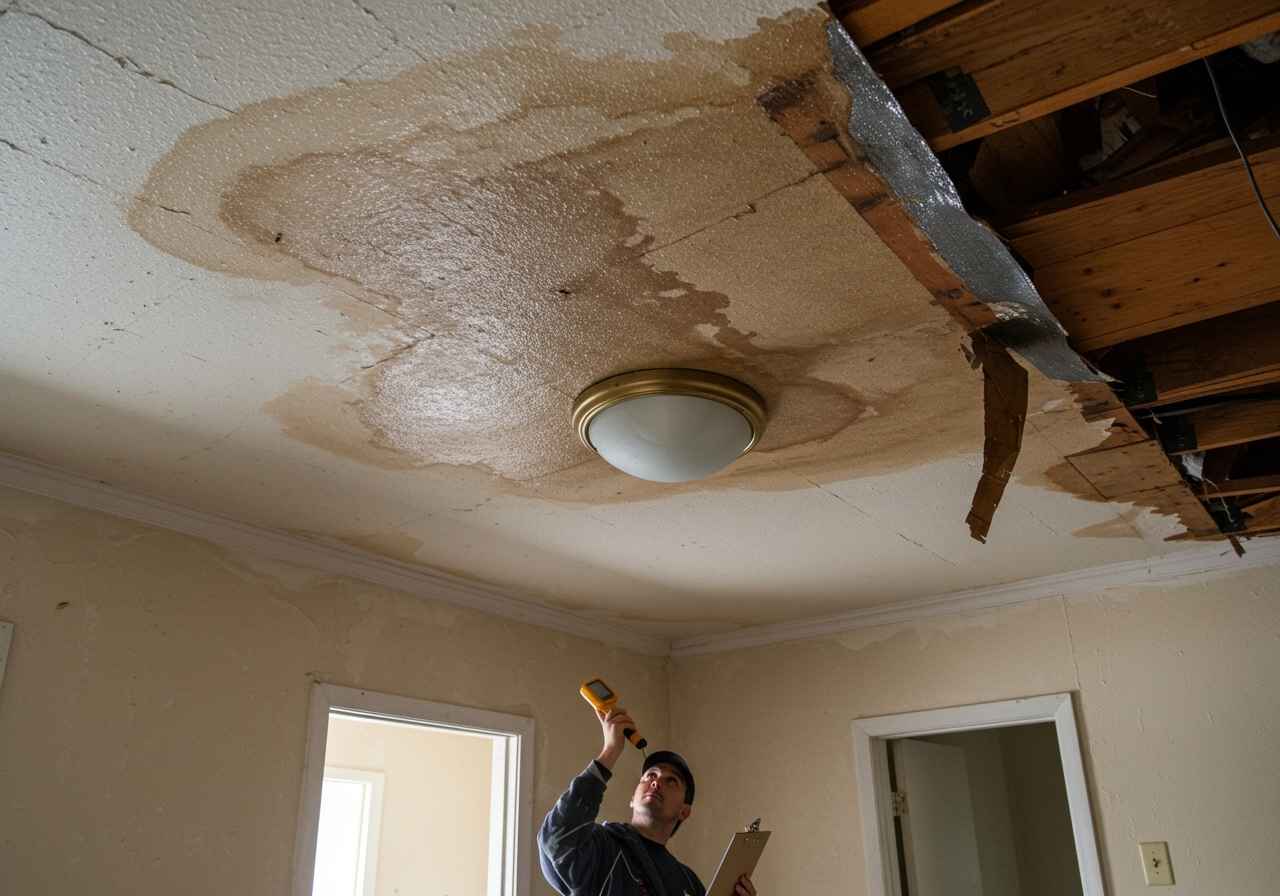
15 Warning Signs Your Roof Underlayment Needs Replacing
Because underlayment is hidden beneath your shingles, its deterioration often escapes notice—until symptoms show up inside your property. The key to avoiding costly repairs is recognizing these warning signs early.
Whether you own a single-family home or manage multiple commercial buildings, here are 15 red flags that your roof underlayment may be nearing the end of its lifespan.
1. Leaks During or After Rain
Persistent or recurring leaks are often the most obvious clue. If water is making its way indoors—even with intact shingles—it likely means the underlayment has been compromised, underscoring the importance of roof leak detection and prevention tips.
2. Peeling Paint or Ceiling Stains
Discoloration, bubbling paint, or peeling surfaces near ceilings or walls are early signs that moisture is sneaking past your roof’s defenses.
3. Mold or Mildew Near the Attic
Musty odors, black spotting, or visible fungal growth near attic vents or insulation can point to water intrusion beneath the roofing surface. Roof waterproofing solutions may help prevent future occurrences.
4. Shingle Curling or Sagging Spots
While curling shingles are a surface issue, they often indicate what’s happening underneath—damaged or saturated underlayment that’s failing to repel moisture.
5. Roof Debris in Gutters
If your gutters are collecting shingle granules or bits of torn synthetic underlayment, it’s a sign of breakdown occurring at the roof’s surface and subsurface levels. Routine gutter cleaning can help monitor and reduce these risks.
6. Roof Age Nearing 15–20 Years
Most underlayments are rated for 15–25 years, depending on climate and material—check out our roof underlayment replacement cost guide to understand what to expect when budgeting for repairs.
If your roof is approaching that mark, preemptive inspection is wise—even without visible issues—as it may signal the best time to replace roof underlayment before major problems arise. You can read more about how long roof underlayment lasts based on type and conditions.
7. Musty Odors in Upper Floors or Attics
Unpleasant smells in attic areas or top-floor closets can be an early indicator of trapped moisture, even before visible damage appears.
8. Visible Underlayment Damage from Prior Inspections
If a previous contractor noted wrinkling, tears, or brittleness in exposed sections of underlayment, those areas may now be actively failing. Scheduling a roof inspection is essential.
9. Energy Bills Rising Without HVAC Changes
If your energy use spikes without a clear reason, moisture-compromised insulation from underlayment failure might be reducing your home’s thermal efficiency.
10. Granule Loss or Shingle Damage
When shingles wear out or lose their protective granules, the underlayment beneath them becomes more vulnerable—especially after UV exposure or hail.
11. Flashing Issues or Rot at Roof Edges
Rust, cracking, or missing flashing near eaves and valleys can allow water beneath the surface, accelerating underlayment wear in high-stress zones. Roof flashing repair can mitigate further damage.
12. Cracked or Warped Roof Decking
During an inspection, visible signs of warping or cracking in the plywood sheathing often point to prolonged moisture contact from compromised underlayment.
13. Pest Activity in Attic
Rodents and insects are drawn to warm, damp environments. If you’re hearing movement or seeing signs of pests in the attic, moisture from underlayment failure could be the cause.
14. Water Spots Reappearing After Repairs
If you’ve had roof repairs but see stains return, the problem may not be with the shingles—it could be a deeper issue with the underlayment below.
15. Post-Storm Deterioration Signs
After a hurricane, hailstorm, or high-wind event, look for signs like sagging rooflines, interior leaks, or torn flashing—these can all signal underlayment damage. Storm damage repair services may be necessary.
Takeaway: Underlayment issues rarely fix themselves—and the longer they go unchecked, the more damage they can cause. If you notice one or more of these signs, scheduling a professional inspection could save you thousands in repairs and preserve your roof’s long-term performance.
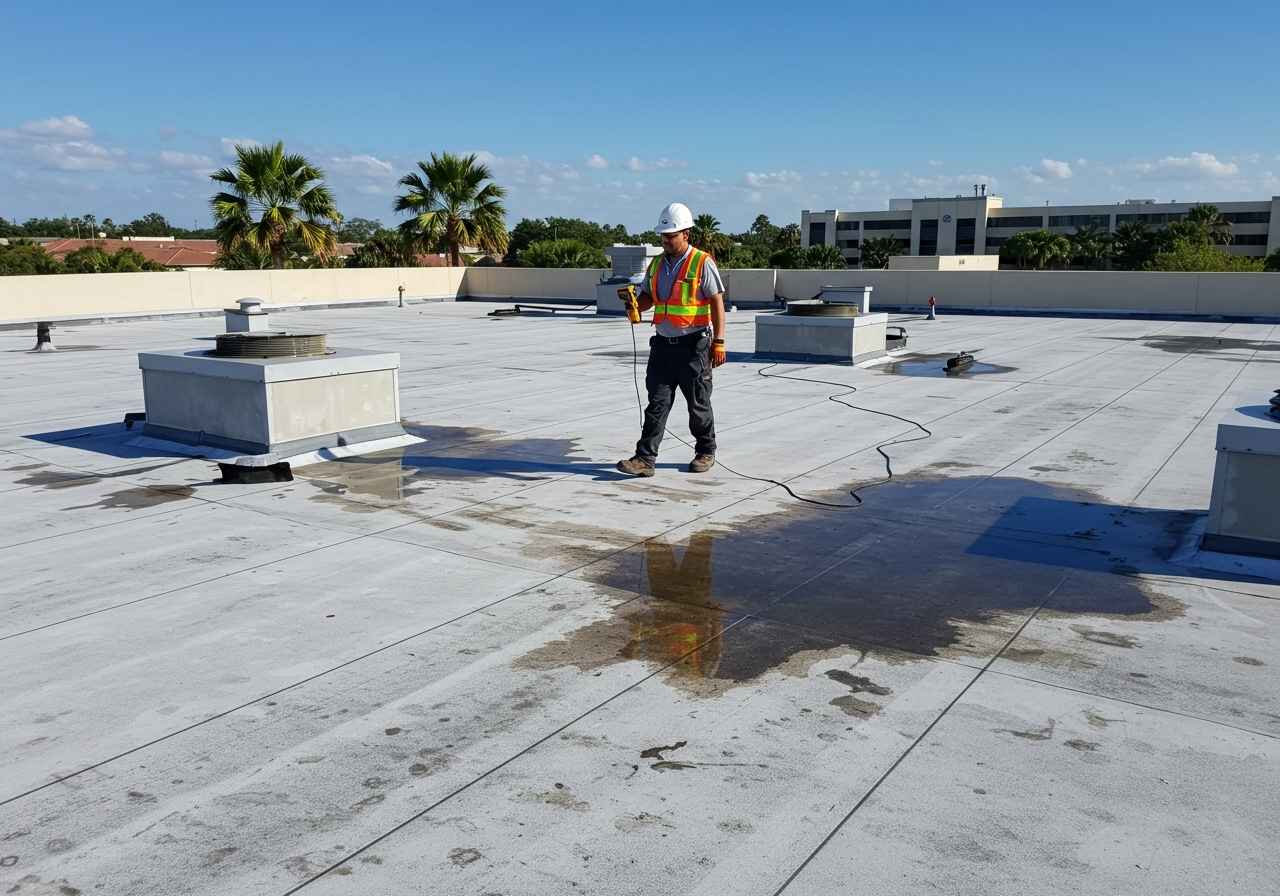
Unique Indicators for Flat Roofs and Commercial Buildings
While many signs of roof underlayment failure apply across property types, flat roofs and commercial buildings come with their own set of warning signals. These structures often have more complex roof systems, increased foot traffic, and large surface areas—factors that accelerate wear and make early detection even more critical.
If you manage multi-family housing, office complexes, retail centers, or industrial facilities, keep an eye out for these commercial-specific indicators of underlayment deterioration:
1. Pooling Water That Doesn’t Drain Within 48 Hours
Flat roofs are especially prone to ponding water, which puts consistent pressure on the underlayment. If water is still present two days after rainfall, it’s a sign your roof drainage system—or your underlayment—is no longer performing as designed.
2. Blistering or Bubbling in the Roof Membrane
Raised pockets or blisters in the roofing membrane often mean moisture is trapped between layers, a red flag that the underlayment is compromised and allowing vapor intrusion.
3. Cracking Near HVAC Units or High-Traffic Zones
Areas around rooftop equipment or walkways experience more stress and movement. Cracks in these spots suggest the underlayment is wearing down prematurely due to constant pressure or thermal expansion.
4. Excessive Granule Loss from Modified Bitumen or Cap Sheets
Flat roofs with bitumen-based systems may lose protective granules over time. If large patches look smooth or faded, UV damage could be accelerating underlayment degradation beneath the surface.
5. Moisture Marks in Drop Ceilings or Upper-Level Wall Joints
In commercial interiors, roof underlayment failure often shows up not on the roof—but in ceiling tiles, drywall seams, or around vent openings. Staining, sagging, or bubbling in these areas deserves immediate attention.
Comparison Table: Flat Roof vs. Pitched Roof Warning Signs
| Warning Sign | Flat Roofs (Commercial) | Pitched Roofs (Residential) |
| Water pooling | Common and dangerous if not drained | Rare; water usually sheds naturally |
| Membrane blisters | Indicates trapped moisture and failing underlayment | Not applicable |
| HVAC-related cracking | High-risk zones for deterioration | Less common unless improperly installed |
| Granule loss on flat materials | Visible UV damage; faster breakdown | Typically seen in aging asphalt shingles |
| Moisture in drop ceilings/wall joints | Subtle but serious—requires inspection | Water stains more likely to appear on ceilings/walls |
Takeaway: Flat and commercial roofs demand more frequent inspections and unique attention due to flat roof maintenance issues to monitor that often lead to underlayment deterioration. Their signs of underlayment failure are often subtler but can lead to widespread damage if ignored. Facility managers should treat any of the indicators above as a signal to investigate further—ideally before tenants or systems are affected.
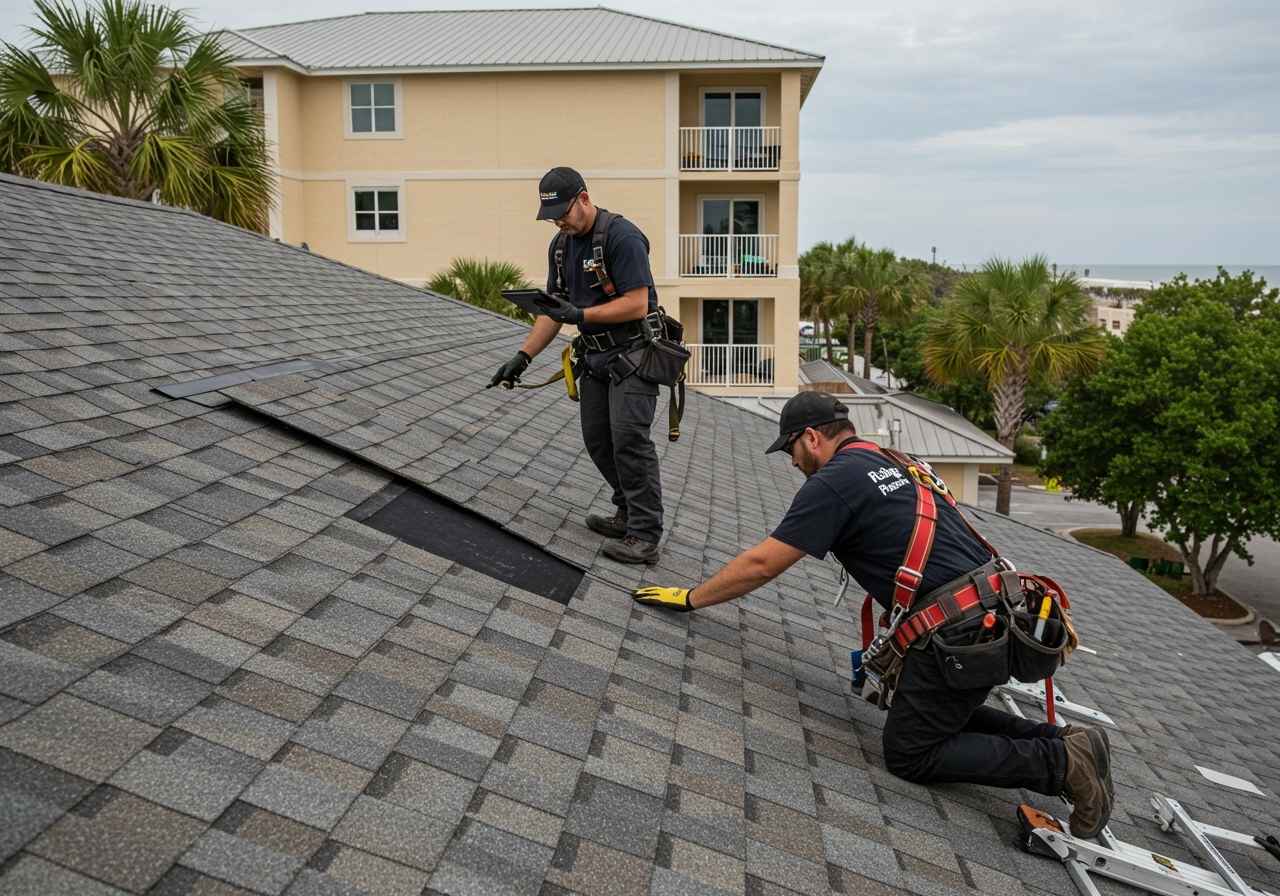
When to Schedule an Inspection
Recognizing the signs of underlayment wear is crucial—but knowing when to bring in a professional can make the difference between preventative care and expensive repair work. Regular roof inspections are one of the most effective ways to catch underlayment deterioration before it leads to mold, leaks, or structural damage.
Whether you’re maintaining a commercial property or your family home, here are key times to schedule an underlayment inspection:
1. After Major Storms or Hurricanes
High winds, heavy rain, and flying debris can weaken or tear underlayment—even if shingles appear intact. In storm-prone regions like Florida, it’s smart to schedule a roof check after every major weather event. You may even need emergency roof repair in some cases.
2. At Least Twice a Year (Spring and Fall)
Seasonal inspections help identify damage caused by summer heat, winter storms, and everything in between—making it important to understand the best season for roof replacement. Spring and fall are ideal times to evaluate the roof’s condition and make repairs before extreme temperatures set in.
3. Before Listing or Purchasing a Property
If you’re preparing to sell—or considering buying—an inspection can reveal hidden roof problems, including underlayment issues that may affect valuation or insurance. It also gives buyers confidence in the long-term integrity of the property.
4. Every 6–12 Months for Older Roofs
Roofs over 15 years old need closer attention. As materials begin to age and warranties expire, issues like brittle underlayment, flashing failure, or decking rot become more likely. Regular checkups can help extend the roof’s usable life.
Bonus Tip: Use a Roof Inspection Checklist
To make the most of your inspection, come prepared. A basic checklist helps track what to look for—from surface wear to attic signs of moisture. A comprehensive roof inspection guide is a great tool for property managers overseeing multiple buildings or for homeowners managing annual maintenance.
Takeaway: Timely inspections are one of the best investments you can make in your property. They don’t just catch underlayment issues early—they protect your budget, your tenants, and your peace of mind.
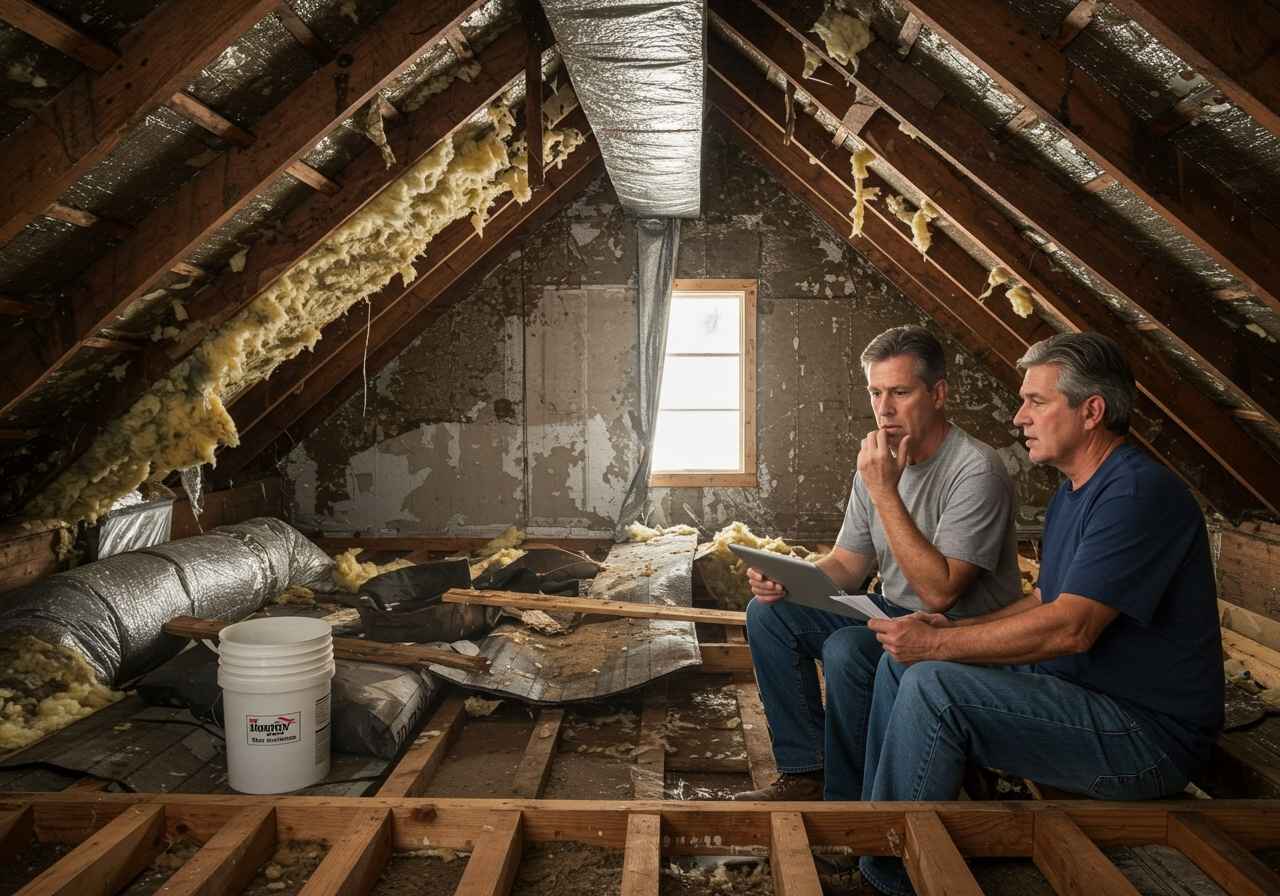
Risks of Delaying Underlayment Replacement
It’s easy to overlook a small ceiling stain or a faint musty smell in the attic. But when those signs point to a failing roof underlayment, waiting too long to act can turn a minor issue into a major—and costly—problem. Underlayment is designed to be a protective barrier, but once it’s compromised, the damage often spreads out of sight until it’s too late.
Here’s what can happen when underlayment replacement is delayed:
1. Water Infiltration Leads to Interior Damage
Once moisture slips past the underlayment, it can seep into insulation, drywall, and even electrical systems. This causes ceiling sagging, wall discoloration, and long-term damage to finishes and fixtures.
2. Mold and Mildew Become Health Hazards
Damp roof cavities are the perfect breeding ground for mold spores. Roof sealing may help prevent future infiltration and buildup. Remediation often requires removing drywall, insulation, and flooring—adding thousands to repair costs and posing health risks to occupants.
3. Structural Weakening and Wood Rot
Over time, prolonged exposure to moisture softens wood sheathing and rafters, weakening the roof’s integrity. What started as a small underlayment issue can eventually lead to partial roof collapse or a full structural rebuild.
4. Insurance Denials or Coverage Gaps
Insurance policies often cover storm-related damage—but not neglect. If an adjuster determines that you failed to maintain or replace deteriorated underlayment in a timely manner, your claim may be reduced or denied altogether.
Cost Comparison: Early Fix vs. Delayed Repair
| Scenario | Estimated Cost |
| Routine underlayment replacement | $2,000 – $5,000 |
| Minor leak repair + partial replacement | $5,000 – $8,500 |
| Full roof + decking replacement | $10,000 – $20,000+ |
| Mold remediation + structural repairs | $15,000 – $40,000+ |
Takeaway: Ignoring underlayment warning signs doesn’t just risk your roof—it risks your finances, your property value, and your peace of mind. Acting early is far more affordable than waiting until you’re dealing with mold, rot, or insurance disputes.
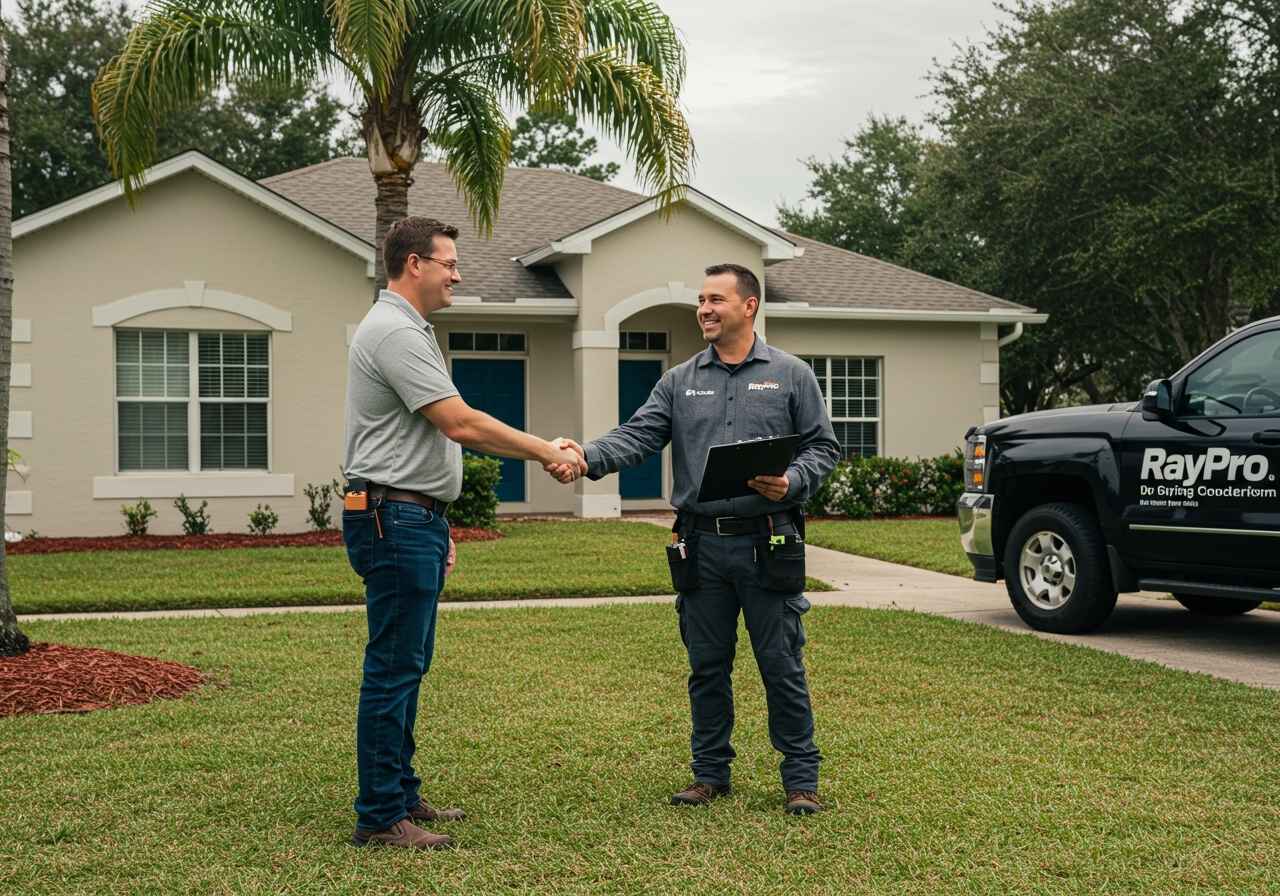
Conclusion – Catch the Warning Signs Before It’s Too Late
Roof underlayment may be out of sight, but it should never be out of mind. As we’ve covered, small red flags—like a water stain, sagging shingles, or musty attic air—can signal bigger problems brewing just beneath the surface. Ignoring these signs can lead to mold, structural rot, inflated repair costs, and even insurance complications.
The good news? Most underlayment issues can be caught early with routine roof inspections and a watchful eye. Whether you’re a homeowner or manage multiple properties, paying attention to these early indicators protects your investment, preserves roof integrity, and helps avoid emergency repairs down the road.
If you’ve noticed even one of the signs listed in this guide, now is the time to act. Start with a professional inspection to assess the condition of your roof and underlayment. According to RayPro Roofing & General Contracting‘s 17+ years of experience inspecting and maintaining roofs across 17 states, early intervention is almost always the most cost-effective—and stress-free—approach.
Don’t wait until a ceiling stain turns into a structural problem. Catch the signs early, and you’ll stay ahead of costly repairs.
Frequently Asked Questions
Common signs include persistent leaks, ceiling stains, mold in the attic, musty odors, or curling shingles. If your roof is more than 15 years old or recently endured a severe storm, it’s smart to schedule a professional inspection to check for underlayment deterioration.
Yes—experienced roofing professionals can often assess the condition of your underlayment using attic access, moisture detection tools, and thermal imaging. However, in some cases, a small section of shingles may need to be lifted or removed for a direct visual inspection.
In high-heat, high-moisture regions like Florida, underlayment materials may degrade faster—especially if ventilation is poor or the roof experiences frequent storms. While synthetic underlayment may last 20–25 years, felt or lower-grade materials can begin to fail in as little as 10–15 years under these conditions—especially in cases requiring metal roof underlayment replacement where heat retention is higher.
Yes. Flat roofs often show signs like pooling water, membrane blisters, or cracking around rooftop equipment. Moisture intrusion may also appear in drop ceilings or wall joints inside the building, rather than as visible leaks on upper floors.
It depends on your policy and the cause of the failure. Sudden damage from a covered peril (like a hurricane or hailstorm) is often included. However, damage resulting from neglect or normal wear and tear may not be. It’s important to review your policy and keep up with regular inspections to support any future claims.
